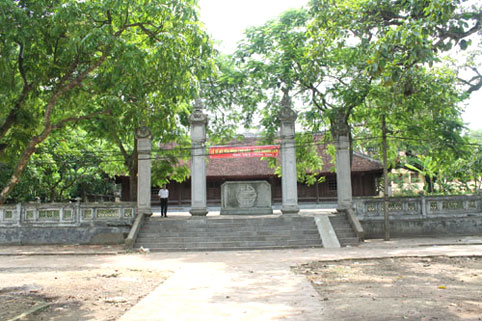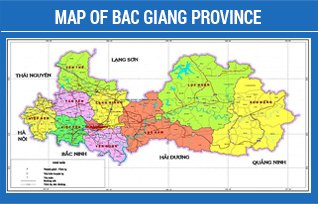16 safety communes in Zone II, Hiep Hoa district
16 communes include: Mai Dinh, Huong Lam, Hoang Van, Hop Thinh, Hoang Luong, Hoang An, Quang Minh, Mai Trung, Xuan Cam, Dai Thanh, Hoa Son, Hoang Thanh, Thai Son, Dong Tan, Hung Son and Thanh Van, Hiep Hoa.

development of revolutionary movement
Prior to the August Revolution in 1945, the safety area of zone II, Hiep Hoa Commune was an important area for the Central Committee of the Party and Revolutionary Military Committee of Bac Ky to organize political and military training courses for the provinces. This is also the place of hiding, safeguard for senior Party cadres in that period. From 1938 to 1945, comrades: Truong Chinh, Hoang Quoc Viet, Ngo The Son, Truong Cong Lenh, Le Hoang, Ha Thi Que, Nguyen Trong Tinh, Nguyen Thi Thuan, Le Thanh Nghi ... gathered in here, propagated revolutionary movement and protected by the people. The people of communes in the region have united, bravely standing up to fight against enemy invasion, contributing to the general uprising to win the government across the country.
On 08/8/2012, the Prime Minister issued Decision No. 1041 / QD-TTg on the recognition of An toan communes in zone II of Hiep Hoa district, Bac Giang province. With that, on September 7, 2012, the Chairman of the provincial People's Committee issued Decision No. 1253 / QD-UBND approving the project on investment in socio-economic development, preservation and embellishment of historical relics in safety communes in zone II of Hiep Hoa district in the period 2013-2020.
When the project are implemented, infrastructure for production and life of the people is invested and built such as irrigation works, transportation, cultural houses, clean water, environment pollution ... will promote economic growth of the region, economic restructuring, increase the proportion of industry and services; shifting the structure of plants and animals, forming concentrated production areas specializing in commodity production, increasing economic efficiency per unit area. Facilitate exchange and exchange of goods with the outside market; tourism development and production, business and services; Create more jobs, increase income for people in the revolutionary base. Protecting and preserving revolutionary relics, reflecting the revolutionary traditions of our people towards the roots of the revolution.

